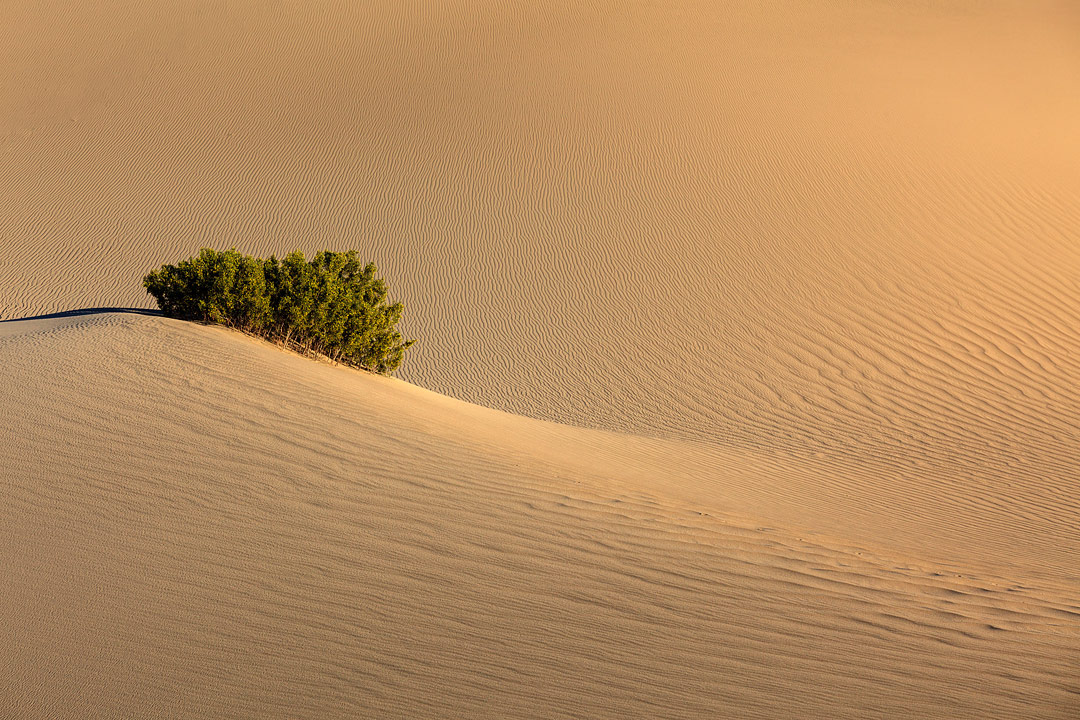Death Valley National Park is one of my favorite US parks. Located in the Mohave Desert in southern California, it encompasses mountains, playas, salt basins, slot canyons and several dune fields. From Aguereberry Point (6433 ft) in the Panamint Range or Dante’s View (5500 ft) in the parallel Black Mountains, one can see the extent of the valley below. Among the dune fields, the most easily accessible are the Mesquite Flat Sand Dunes near Stovepipe Wells. A quick 30 minute walk will put you at the base of the nearest dunes. Unfortunately the nearness of these dunes makes them the most visited and by afternoon covered in tracks. So, the best plan is to get up early and hope that night winds will have scoured away the last traces of human visitation.
On the way to the highest dunes, photographers can create compositions with the dried mud flats and shrubs that border the dunes. With both wide angle and telephoto lenses, one can create uniques images. For this image, I used my 70-200 mm lens to isolate this shrub and provide some perspective compression. The first time I encountered one of these shrubs I didn’t know that they are creosote bushes. In early April, they are covered in yellow flowers and swarms of bees. Native people used them for a variety of medicinal purposes, and extracts are antimicrobial and antifungal.
I originally processed this image with an early version of Lightroom. When I selected it for submission, I decided to reprocess it with the latest version of Lightroom and was surprised by the not subtle improvements it made.


